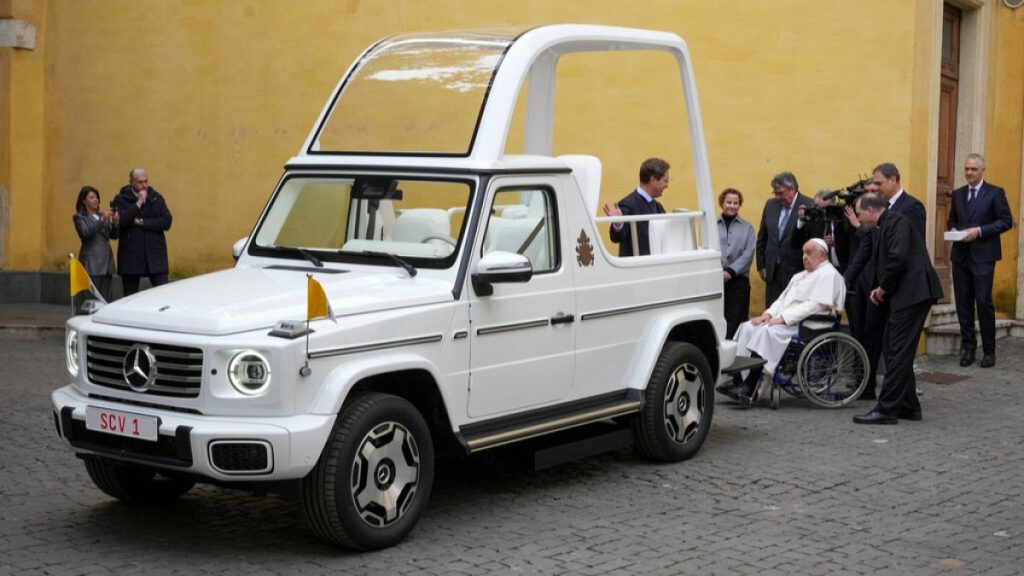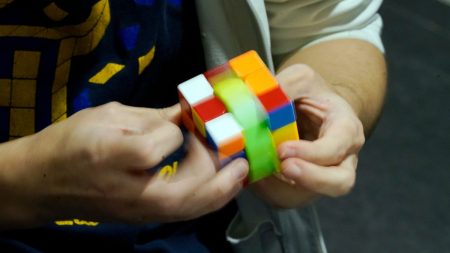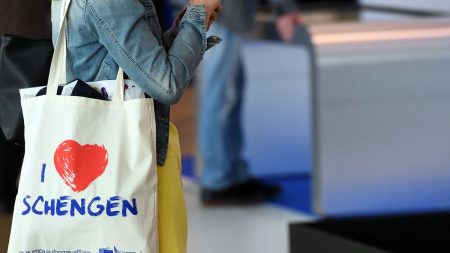On Wednesday, the Vatican announced the unveiling of Pope Francis’ new Popemobile, a notable electric vehicle model, the Mercedes G-Class. This modern adaptation of the traditional Popemobile is significant as it marks the first fully electric vehicle designed for papal use, promoting zero carbon emissions. The decision aligns with Pope Francis’ ongoing commitment to environmental protection and climate change advocacy, emphasizing the Catholic Church’s interest in preserving the planet. The new Popemobile will serve as a vehicle for the Pope to greet pilgrims during General Audiences and official ceremonies in St. Peter’s Square, symbolizing both his accessibility and his dedication to sustainable practices.
Mercedes-Benz Group CEO Ola Källenius expressed pride in delivering this vehicle, highlighting the rich historical partnership between the automaker and the Vatican, which dates back to 1930 when the first car was presented to Pope Pius XI. The all-electric G-Class released earlier this year was specially modified for the Pope, reflecting a synthesis of tradition and modern innovation. Källenius noted that considerable craftsmanship went into creating this unique vehicle, involving “hundreds of hours of passion,” underscoring the importance of this project both for the company and the Vatican.
This state-of-the-art Popemobile features an elevated and rotating heated seat for the Pope, enhancing visibility and comfort while engaging with the public. The design also includes platforms for Swiss guards, ensuring the safety of the Pope during public engagements. Retaining the iconic white color associated with papal vehicles, the Popemobile is adorned with the Pope’s crest, symbolizing not only the individuality of the vehicle but also the continuity of its sacred purpose. The design incorporates functionality suited for both urban settings and ceremonial events, indicative of a vehicle that represents the Church’s mission in the modern world.
Källenius highlighted the vehicle’s versatility, suggesting it is capable of navigating various terrains while embodying a sense of tranquility as it glides through crowds, thanks to its electric motor which offers a quieter experience. The innovation of the Popemobile serves to bridge a historical waning of popes’ public engagements with a refreshed mode of interaction, aligning with current sustainability efforts while maintaining a connection to past traditions. As the vehicle is tailored for slower travel, it is expected to enhance the experience of individuals gathering to greet the Pope.
While the exact date for the Popemobile’s operational use remains uncertain, there are indications that it will debut in 2025, coinciding with the Jubilee celebrations. This timing is strategically significant, as it presents an opportunity for Pope Francis to further engage with a large audience, potentially amplifying the message of environmental stewardship. The usage of this vehicle will mark a transformative phase in papal mobility, infusing a historical role with contemporary relevance.
In summary, this new chapter in papal transportation is emblematic of broader shifts within the Catholic Church toward sustainability and modernization. The electric Mercedes G-Class exemplifies Pope Francis’ advocacy for greener policies, reinforcing the Church’s role in global discussions about climate change. As the Vatican continues to evolve its practice and engagement with the public, the introduction of the electric Popemobile serves not only as a practical solution but also as a moral statement about the direction in which the Church aims to move in the 21st century.














